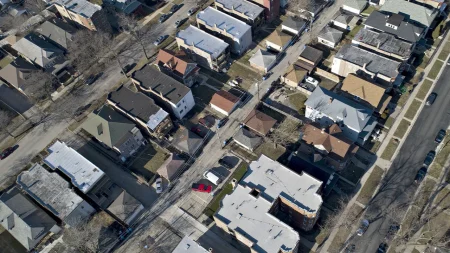The Silent Victims: Assad’s Hostage Strategy and the Families Caught in Syria’s Crossfire
Weaponizing Family Ties: How Assad’s Regime Used Women and Children as Bargaining Chips
In the shadow of Syria’s bloody civil war, a particularly brutal tactic emerged under Bashar al-Assad’s regime that has received far less international attention than airstrikes and chemical weapons. Across government-controlled territories, security forces systematically detained the wives, children, and relatives of opposition fighters—not for any crimes they committed, but simply for their family connections. These civilian hostages, predominantly women and children, became pawns in Assad’s strategy to pressure rebels into surrender or negotiation. After years of silence enforced by fear and trauma, survivors of this calculated policy are finally beginning to share their harrowing experiences, revealing the profound psychological and social devastation this practice has inflicted on Syrian society.
“They came for me at dawn,” recounts Samira (name changed for protection), whose husband had joined the Free Syrian Army in 2013. “Four armed men broke down our door and took me and my three children, the youngest just seven months old. They told me I would be released when my husband turned himself in.” Samira spent fourteen months in detention, separated from her infant after the first week, enduring conditions she still struggles to describe. Her story echoes hundreds of others now emerging as humanitarian organizations document this widespread practice that international legal experts characterize as collective punishment—a violation of the Geneva Conventions and a potential crime against humanity.
The strategic detention of family members represented a calculated expansion of the Assad regime’s repression toolkit. Security agencies maintained detailed records of fighters’ family connections, conducting coordinated sweeps through neighborhoods where opposition sentiment ran high. Women were particularly vulnerable targets, with detention carrying not only physical threats but profound social stigma in conservative communities. Human rights investigators have documented cases across all of Syria’s major urban centers—Damascus, Homs, Aleppo, and Daraa—suggesting a centrally authorized policy rather than isolated incidents. One former Syrian intelligence officer who defected confirms this assessment: “Taking their families was standard procedure. We knew it was more effective than pursuing the fighters themselves. A man might accept his own death, but not the suffering of his wife and children.”
Breaking the Silence: Survivors Share Their Ordeal and Seek Justice
The psychological aftermath for those who survived such detentions has proven nearly as devastating as the experience itself. Clinical psychologists working with refugee populations in Turkey, Jordan, and Lebanon report complex trauma patterns among former hostages—particularly children who were detained alongside their mothers or held separately. “These children show profound attachment disorders, nightmares, and developmental regression,” explains Dr. Nour Mahmoud, who treats Syrian refugees in Amman. “They were punished not for anything they did, but simply for existing—for being the child of someone the regime considered an enemy.” Many women released from detention have faced rejection from their own communities, suspected of sexual compromise during captivity regardless of their actual experiences. This social stigma has forced many into isolation, compounding trauma with abandonment.
International humanitarian law explicitly prohibits hostage-taking and collective punishment, yet accountability for these specific violations remains elusive. While the broader Syrian conflict has generated numerous investigations into chemical weapons usage, barrel bomb campaigns, and ISIS atrocities, the systematic detention of fighters’ families has received comparatively little judicial attention. The UN Commission of Inquiry on Syria has documented these practices in multiple reports, but prosecution pathways remain limited. “This represents a profound failure of international protection mechanisms,” argues Laila Alodaat of the Women’s International League for Peace and Freedom. “When holding a child hostage becomes a military tactic, and the world responds with essentially silence, we’ve crossed a dangerous threshold in normalized brutality.”
For the women who endured these detentions, the path forward remains fraught with challenges. Many now live in exile, their families fractured by death, disappearance, or the psychological aftermath of trauma. Support networks among survivors have emerged organically, particularly in refugee communities, where shared experience creates unique understanding. “Only another woman who was taken because of her husband can truly understand,” explains Fatima, who spent eleven months in a detention facility outside Damascus. “We carry a specific kind of pain.” Remarkably, several former detainees have channeled their experiences into documentation and advocacy work, meticulously recording testimonies and building evidence files they hope will someday support prosecutions. Their work represents both a therapeutic process and a reclamation of agency—transforming victimhood into action.
The Lasting Impact: How Assad’s Hostage Strategy Has Transformed Syrian Society
The systematic detention of fighters’ families has left scars on Syrian society that will likely persist for generations. Beyond the immediate trauma experienced by those directly detained, the practice created cascading effects through communities. Opposition fighters faced impossible moral calculations—continue resistance and risk their family’s torture, or surrender and face likely execution. Many chose a third option: sending their families on dangerous migration journeys to Turkey or Europe, contributing significantly to refugee flows that have reshaped global politics. Within Syria, community trust collapsed under the weight of suspicion, as neighbors feared being reported for any family connection to opposition members. “Assad didn’t just destroy buildings,” observes Syrian sociologist Dr. Hani Kamal. “He methodically dismantled the social fabric that might someday rebuild those buildings.”
As Syria enters what appears to be the conflict’s final chapter—with Assad maintaining power over much of the country—questions of justice and reconciliation loom large. For the women and children used as bargaining chips, conventional transitional justice mechanisms may prove inadequate. Their experiences remain incompletely documented, obscured by both shame and the chaos of ongoing humanitarian crisis. International attention has focused primarily on the release of political detainees, with less advocacy for those held purely as leverage. Yet without acknowledgment of this specific form of victimization, meaningful healing remains distant. “They took my body from prison,” reflects Huda, detained for twenty-seven months because of her brother’s opposition activities, “but my spirit remains captive. Only truth can free it.”
The strategic targeting of fighters’ families in Syria represents more than a wartime atrocity—it signals a dangerous evolution in how authoritarian regimes might leverage family bonds as weapons. Human rights observers have noted similar tactics emerging in other conflicts, suggesting Syria may have provided a template others now follow. For the international legal community, this presents an urgent challenge: can accountability mechanisms adapt to address forms of violence that specifically exploit family relationships? As survivors continue breaking their silence, their testimonies offer not only evidence for potential future prosecutions but also crucial insights into conflict dynamics that extend far beyond Syria’s borders. Their courage in speaking represents perhaps the most powerful resistance to a strategy designed specifically to silence through fear.
The women who endured detention as hostages for their male relatives’ actions carry profound wisdom about both human cruelty and resilience. Their experiences reveal how conflict spreads beyond battlefields into the intimate spaces of family life, and how traditional conceptions of combatants versus civilians fail to capture war’s complex reality. As the world continues grappling with Syria’s legacy, these survivors’ voices must move from the margins to the center of any meaningful accountability process. “They took us to break our men,” says Amal, who spent eighteen months in detention with her young daughter. “But in the end, they created something they never expected: women who cannot be broken again.” Her words capture the paradoxical outcome of Assad’s hostage strategy—trauma transformed, slowly and painfully, into a unique form of strength that may yet contribute to Syria’s eventual healing.








